Newsletter
Only good movies
Get the Indie Focus newsletter, Mark Olsen's weekly guide to the world of cinema.
You may occasionally receive promotional content from the Los Angeles Times.
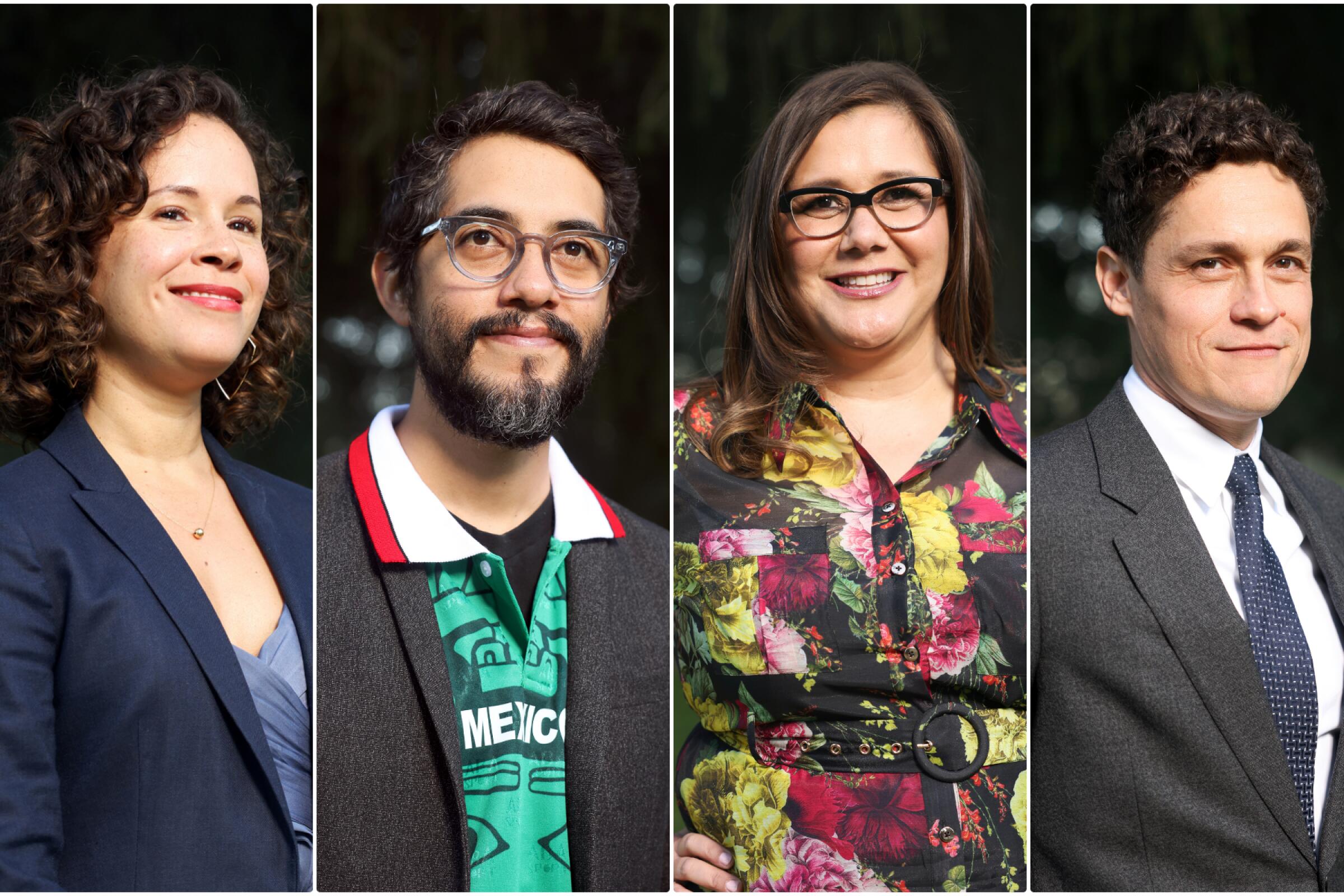
Worlds of wonder have materialized in every frame of animated productions for a century, but it’s only in recent years that these realms — and the people who conjure them up — have begun to reflect a wider spectrum of racial and ethnic identities, cultures and lived experiences.
In a striking sign of progress, three of the five films Oscar-nominated for animated feature this year include Latino talent in top creative and leadership roles. That makes it the category with the most Latino representation among its nominees.
Four of these Latino artists based in Los Angeles spoke about their distinct entryways into the medium with The Times: Phil Lord, one of the producers of “The Mitchell vs. The Machines”; Yvett Merino, producer on “Encanto”; Carlos López Estrada, co-director of “Raya and the Last Dragon”; and Charise Castro-Smith, co-screenwriter/co-director of “Encanto.”
Although their collective range of previous endeavors includes live-action filmmaking, administrative duties and acting, all four creatives have found an artistic home in the boundless possibilities of animation.
Franco is the first Latina and first woman of color ever to be nominated for original score at the Academy Awards.
For some, finding success in film or television seemed unrealistic early on, while others couldn’t imagine doing anything else. They all agree, however, that the entertainment industry’s solutions to diversify the creative pool remain insufficient.

Since the 2009 release of his directorial debut, “Cloudy With a Chance of Meatballs” — alongside longtime creative partner Chris Miller, who had also collaborated on the MTV series “Clone High” — Lord has established himself as a nearly infallible force in animation.
The Miami native, who grew up in the 1980s, has cherished memories of waking up before dawn on Saturday mornings to watch the “G.I. Joe: A Real American Hero” and “Pac-Man” animated series with his younger sister. Though their artistic quality, he now thinks, was questionable, they complemented a media diet that featured famed astrologer Walter Mercado, the Univision variety show “Sábado Gigante” and the Cuban talk show “La Mesa Redonda.”
“I grew up on some of the worst animation, but I couldn’t stop looking. I was always fascinated,” he said.
A turning point came years later in the form of the International Tournée of Animation, a showcase of animated shorts from around the globe that screened across the country, including an art house theater near the University of Miami. “I would get one of my parents to drag me down there. That’s how I was first introduced to ‘The Simpsons,’ Bill Plympton, the Brothers Quay and all the Eastern European animators,” he said.
Moving to Los Angeles after college, Lord and Miller began writing on comedy shows until their own projects came to fruition. They’ve directed “The Lego Movie” and the live action “21 Jump Street” franchise, and produced “The Mitchells vs. the Machines” and previous animated feature Oscar winner “Spider-Man: Into the Spider-Verse.” The latter, where the hero, Afro-Latino teen Miles Morales, speaks English and Spanish, remains a uniquely proud project for the creator.
“One of the luckiest chances I’ve ever gotten was to be able to write the ‘Spider-Verse’ movie and to take my experiences of growing up in two cultures and try to write a little bit of that for Miles,” said Lord. ”I had something from my life experience to apply to that, and it made it come to life for a lot of people that watched that movie.”
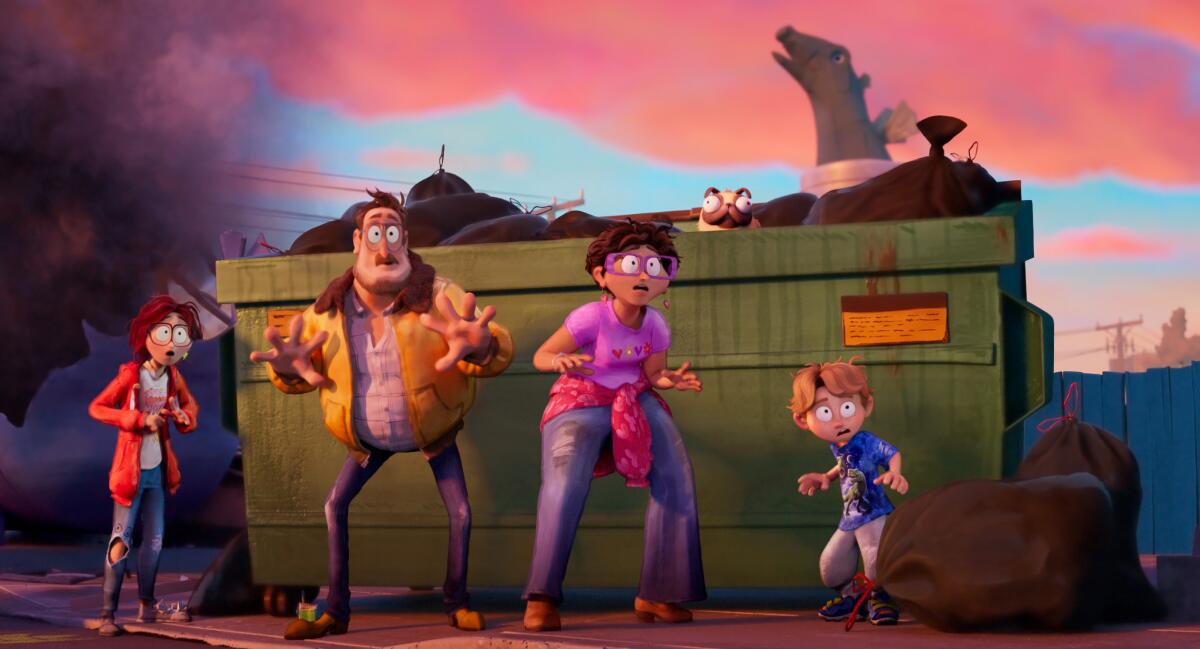
On “The Mitchells,” the lead character, Katie Mitchell, is the first queer protagonist in a studio animated feature. Lord hopes that such groundbreaking feats become obsolete as representation on-screen catches on with the real world. “What can be so powerful about inclusion is that you’re not otherizing anybody, you are just saying that this is what some people are like, this is what a protagonist can be,” he added.
Having participated in countless panels on inclusion in the entertainment industry, Lord believes there are two questions that people in positions of power should ask themselves if they are serious about change: “Are we doing a good enough job finding people, grown-ups who are ready to work, and inviting them onto these productions? And are we doing a good enough job training the next generation of people?”
With that in mind, supporting organizations like LatinX in Animation, a group that operates across multiple studios to highlight emerging talent in this subset of the industry, has become a priority for Lord. “I realized that there were a limited number of people who were in the position that I’m in, where you have a chance to hire people, or to speak in front of others and have them want to hear what I have to say.” Other key positions on “The Mitchells” were also occupied by Latinos, most notably production designer and lead character designer Lindsey Olivares and head of story Guillermo Martinez.
Reflecting on his 2019 Oscar win for “Spider-Verse,” Lord describes the euphoric moment as a tribute to his Cuban family. “The only time I really got emotional that night was when my little cousin sent me the video of the whole family, 25 of us in one room, reacting to the win,” he recalled. “I watched that video and I started to cry, because I thought about everything everyone had gone through to start over in a new country.”
As a Cuban American, Lord is conscious of the class barriers that keep people from entering this field and of his own economic privilege. That his Cuban mother earned a PhD in psychology enabled him to pursue a career in film. Immigrants from most countries, and their children, don’t often benefit from similar opportunities.
“Cubans are really lucky; when my mother came to this country, she got a grant to go to college. She got legal status. She was considered a refugee from communism. She was welcomed, and those advantages have benefited our family. Not every immigrant has those advantages, and I think about how much better this country that I love would be if we welcomed everybody who came here the same way.”
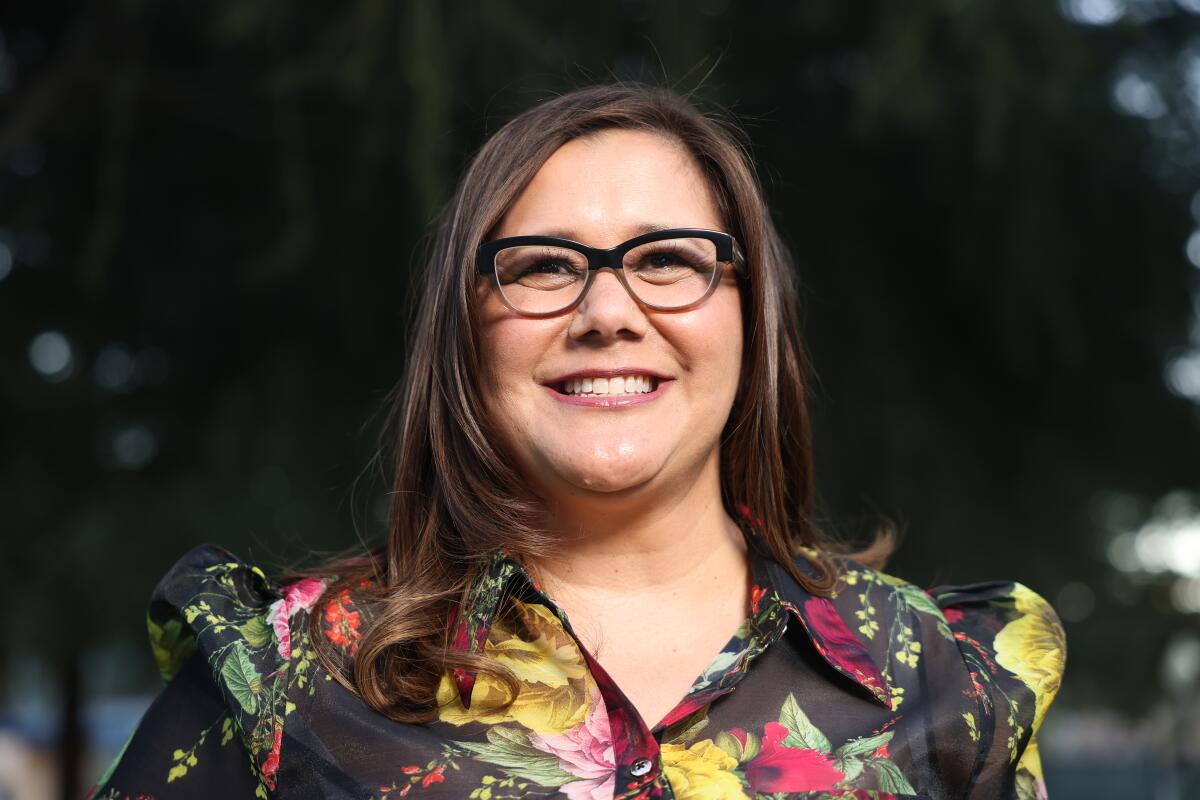
After 25 years at Walt Disney Animation Studios, working on multiple productions in a variety of capacities, Merino received her first producing credit on “Encanto.”
The Mexican American producer, now the first Latina nominated for an animated feature Oscar, grew up in Norwalk, a city in southeastern L.A. Country. Her working-class family had no ties to Hollywood.
“Even though I grew up here in Southern California, we were so far from the entertainment industry and didn’t know anybody who worked there. It wasn’t even on my radar as a possibility that I could ever have a job or work anywhere in it, much less in animation,” she said.
With a degree in sociology from UC Santa Barbara, Merino felt uncertain about her future — until she learned about behind-the-scenes jobs in entertainment. She arrived at Disney Animation as a temp and was hired as an employee in the technology department. She then became an assistant, an office manager and an administrative manager.
Still, fulfilment eluded her. “I wasn’t challenged, and I wasn’t really sure where I was going in my career. I thought, ‘My parents never liked their job, so maybe this is it for me.’” But surrounded by passionate artists drawing dreams from imagination, she found the impetus to persevere and explore options that better suited her aspirations, landing production manager duties on “Tangled,” “Big Hero 6” and “Moana” before taking on a role as producer.
Though supportive, Merino’s parents had never fully registered what her role at Disney entailed, but with “Encanto,” they finally shared a profound moment of pride.
“I was blessed enough to bring them to the premiere,” she said. “Afterwards, I went up to my dad, who’s a very traditional Mexican guy, very quiet, and said, ‘How was it?’ And he goes, ‘Never in my life did I ever think I’d be at a Hollywood premiere, much less for a movie that my daughter produced.’ I feel so fortunate that they’re able to share it with me.”
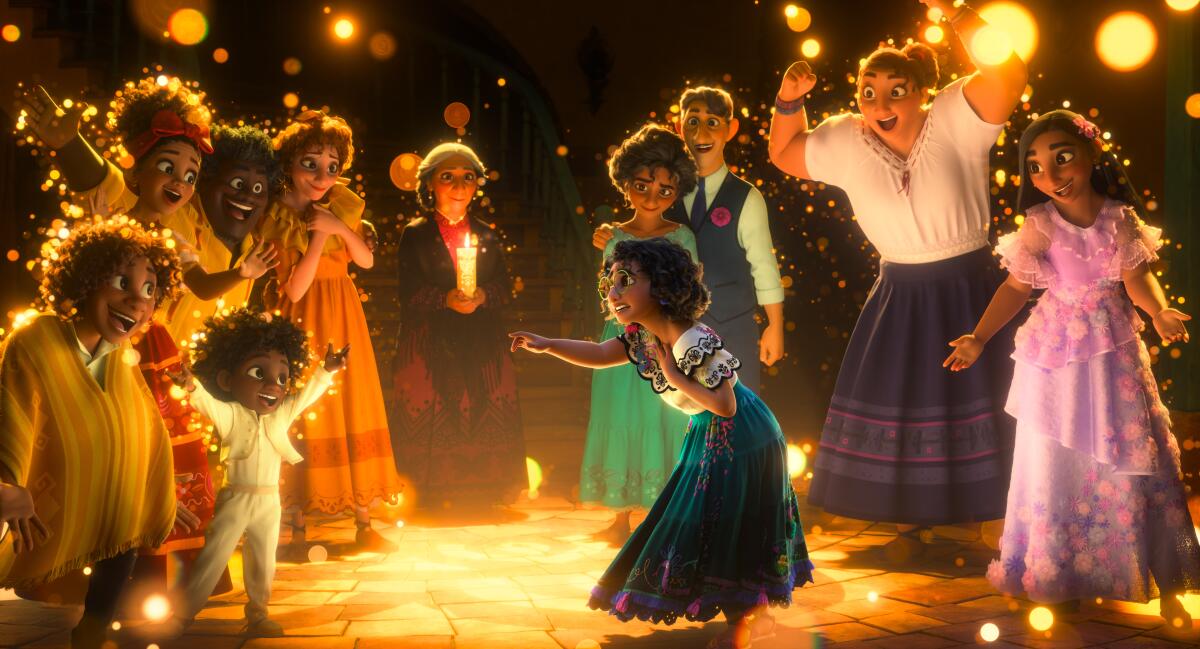
With the popularity of “Encanto” in theaters, on Disney+ and even on the Billboard charts, Merino thinks about the children who will grow up with a Latino family to look up to in popular culture — something she never had. Awards attention and strong reviews have bolstered the film’s positive reception, which she refers to as “humbling,” but Merino’s thoughts return to the two women who made her dream possible.
“My grandmothers both came over here from Mexico, and knowing the sacrifices they made and understanding who they are, learning their story as I got older, learning what they went through in their lives, this story spoke to that. I was excited for people to see it, but nowhere in my mind did I think it would have the success that it has.”
No stranger to discussions about how to solve the industry’s issues around diversity, Merino shared eloquently pointed thoughts.
“Studios want a quick fix to it. They want to know what the instructions are to do it. In my opinion, it needs to be attacked on multiple levels. You have to hire in new people, yes, but hiring in a lot of PAs who are there for one show doesn’t help. You need to hire at different levels and get different voices in,” Merino said. “And for a quicker fix, you need to hire at the higher levels and actually get those voices in the room. You also need to hire incoming talent at entry-level positions, but you need to welcome them and work to make sure that they’re included within the studio.”
Nevertheless, Merino sees efforts at her own company and elsewhere with measured optimism. “I’m so excited about the future of animation in general, because there are a lot of Latinos working within the industry. And the more they share their stories, the more I know my children will see themselves in the various stories, and it’s not just, ‘Oh, remember that one story that Disney did that one time.’”

Music videos — some including animation — kickstarted Mexican-born director López Estrada’s now storied and multi-faceted path into filmmaking. Two well-received live-action features, both with spoken word poetry as part of their DNA — “Blindspotting” and “Summertime” — cemented him as a major voice in independent cinema and a Sundance Film Festival favorite.
Although working in animation was something he had often fantasized about, López Estrada didn’t expect to realize that dream. “Never in a million years could I imagine that I would work at a studio that means so much to me as Disney so early in my career,” he said. And when he was offered to co-direct “Raya and the Last Dragon” with veteran Don Hall, the transition into a new way of working — with hundreds of people involved — was far from smooth.
“Becoming used to the work culture at a place so established and to silence the imposter syndrome in my head was the real challenge for me. But having people like Don and [Disney Animation head] Jennifer Lee, who put their trust in me, made me understand I’m here for a reason, that my voice in the studio mattered and that I bring a unique perspective,” he said. “Throughout the process of making ‘Raya,’ I was able to step into my role and fully embrace it.”
López Estrada didn’t know it when he was hired at Walt Disney Animation Studios, but he was the first director of color behind an animated feature at the studio in its almost hundred-year history. And even with that small but significant step, he worries that conversations about inclusion may fail to bring long-lasting change.
“The one thing that worries me is the sustainability of it. I really hope that this doesn’t just become an era where people reacted to what’s going on around us culturally and socially. Instead, hopefully it becomes clear that this is the way we should be thinking about stories and about creators,” he noted. “This should be the new standard for animation. It’s about making sure this generates a systematic change and not just a temporary thing.”
As part of his efforts to be a resource and mentor, López Estrada regularly engages with nonprofits such as the National Assn. of Latino Independent Producers, the Los Angeles Latino International Film Festival, the Ghetto Film School and Get Lit-Words Ignite (where he met the poets who star in “Summertime”).

Comfortable now as a Disney storyteller, with more projects in the pipeline, López Estrada fondly recalls the studio’s classic that changed everything for him. “’Pinocchio’ was the first one I saw, and I just became completely obsessed with the medium. To this day, if I go back to Mexico City, there’s a lot of people who worked with my mom that still call me ‘Pinoto,’ because as a kid I couldn’t correctly pronounce ‘Pinocchio,’ or ‘Pinocho’ in Spanish. I watched that movie so much that it just marked my identity.”
Unable to promote “Raya” in person because of COVID-19 concerns and guidelines, the director missed out on interacting with audiences, yet social media offered a glimpse at the impact a universally minded film can have.
“It’s really hard to understand the reach that these movies have until you make one. We released our movie during the pandemic, so we didn’t get to travel with it. Promotion was mostly through Zoom. But I feel like I understand it. We’ve seen all the response of people from around the world online and it’s been beautifully overwhelming.”
The son of Mexican television producer Carla Estrada, the director has tried to not overthink his first Oscar nomination, a monumental achievement that once seemed far-fetched. He views it as a gift to the person who’s stood by him throughout his creative endeavors since childhood.
“What I’ve enjoyed the most is what it’s meant to my mother. I’ve gotten to experience it through her eyes. Few things must feel more fulfilling than seeing your children be recognized for something they love doing. This has just meant so, so much for her,” he said. “It has validated so much of her work as a single mother. We’ve gone through rough times as a family, and this has just been so meaningful to her.”
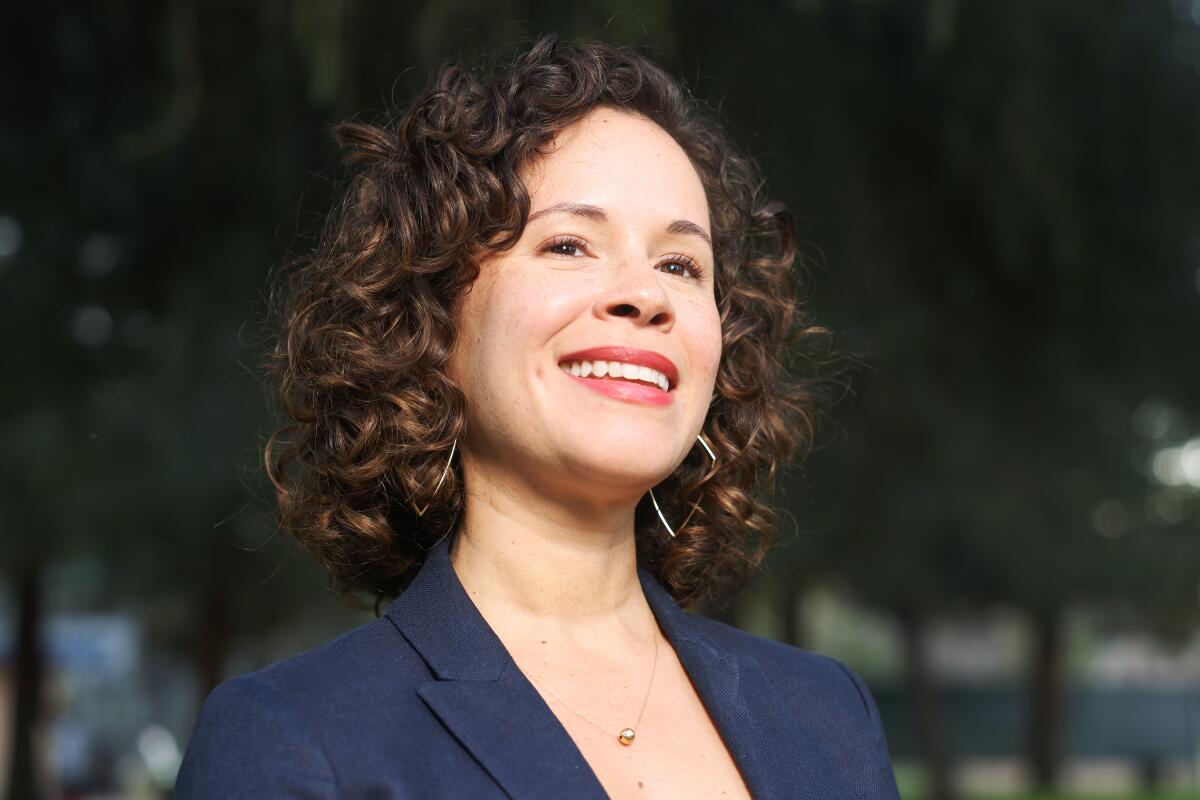
Castro-Smith, a playwright, actress and producer of Cuban descent, was working on the Starz episodic drama “Sweetbitter” when her agent sent a sample of her work to Disney Animation. That first exchange led to a meeting with directors Byron Howard and Jared Bush, who shared a bare-bones concept of what would become the Colombia-set fantasy “Encanto.” She eventually joined them as co-screenwriter and co-director.
“Looking back on my life, I’ve loved animation since I was a child, but I never actually thought about working in animation,” she said. “It really came about in a fortuitous way.”
Ecstatic to partake in the creation of a Latino animated musical for Disney, but simultaneously overwhelmed by the responsibility of crafting it in an unfamiliar medium, Castro Smith found a support system in producer Yvett Merino and Familia, a group for Latino employees within the studio that provided feedback on the project.
“When I first heard it was going be translated into 42 languages, I was like, ‘What?’ I put a lot of pressure on myself. Some of it was not necessary, but I felt the potential for this to be a story that could be a positive way for all Latinx children to see themselves,” Castro-Smith noted. “But also for people who are not Latinx to see these incredibly human characters, love them and maybe change their perceptions about other people they see in the world.”
Castro-Smith started out as an actor and remembers auditioning for dehumanizing parts like the nameless “drug dealer’s girlfriend.” When she transitioned into writing, her mission was anchored in a desire to create better roles for Latinos and to “change the narrative of what Hollywood thought it was possible for us to do.”
Growing up, she found role models in performer Chita Rivera, in José Rivera’s plays and in the one-man theater shows of John Leguizamo (who voices the character of Bruno in “Encanto”). Much like Mirabel, the “Encanto” heroine, Castro-Smith walked the world as an outsider. “One of the reasons I gravitated towards this project so quickly was the fact that this movie was going to be centered around an awkward 15-year-old girl who didn’t know where she fit in. I was like a total weirdo when I was her age.”
Like many immigrant families, Castro-Smith’s parents had reservations about her prospects of making a living in the arts. “They always encouraged me, but I think there was always this pressure to have a backup plan. When I got into the Yale School of Drama as an actor, my mom asked me, ‘Is that good? Is that worth it?’ So she called a friend of hers who was an actor and she reassured her. They’ve always been supportive, but I had to prove myself, and hopefully, I’ve proved myself finally.” She definitely has.
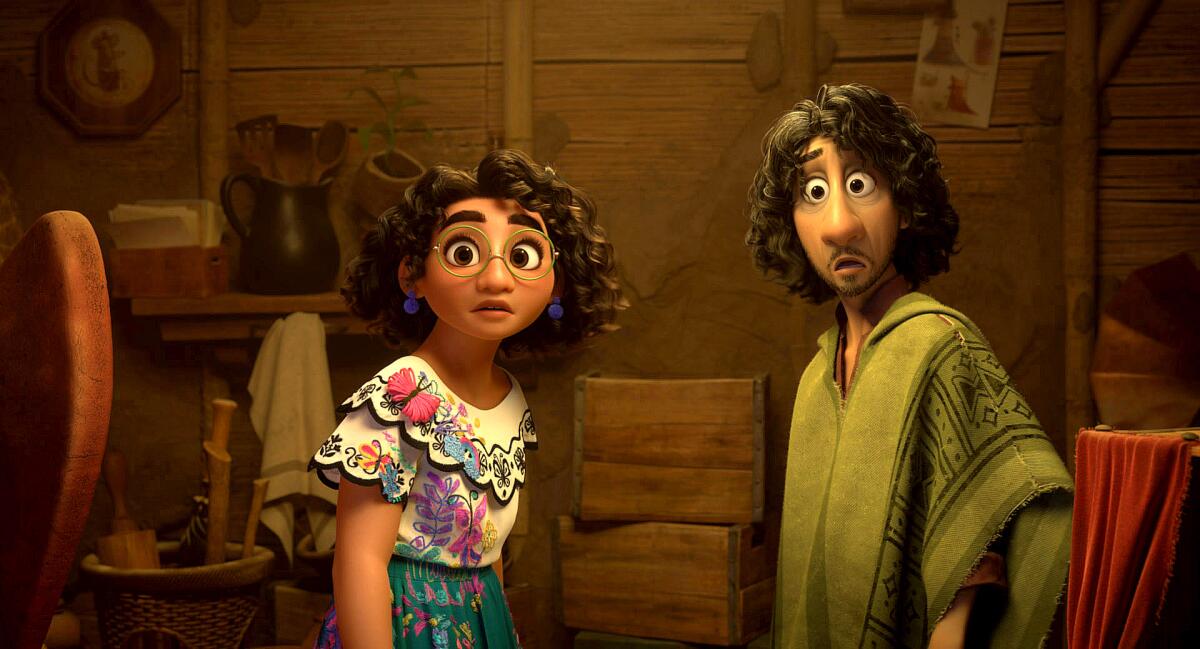
Since her family didn’t get to see the finished film before its release, Castro-Smith’s father watched it at a movie theater on opening day. His reaction to one of the most poignant segments of the story assured her that she’d touched a sensitive fiber. “About the scene with Mirabel and Abuela in the river near the end of the film, he told me, ‘I was watching it and I just knew you wrote that scene.’ That really moved me,” she said.
Thanks to viral reactions on social media and the ubiquitous earworm that is “We Don’t Talk About Bruno,” “Encanto” has taken on a life of its own as a cultural phenomenon. Witnessing an outpouring of earnestness for something she helped create drove home the magnitude of its relevance.
“Just seeing all the TikTok videos, seeing the videos of the children recognizing themselves on the screen, all the videos of people deconstructing the movie and talking about how the family archetypes resonate with them, all of that has been so huge,” Castro-Smith said.
Of course, this rare spotlight on Latino art, via animation, can’t capture an entire community’s idiosyncrasies, but it’s a welcome building block for a more prosperous artistic landscape.
“Hopefully, ‘Encanto’ puts to bed the argument that these movies can’t make money, because this movie made a lot of money. Hollywood is just starting to scratch the surface of actual representation. Most of us who consume popular media have been so conditioned to see storytelling through this white male lens, and it takes a lot to break that,” Castro-Smith said. “It takes a lot to convince people to take chances on new stories and new ways of approaching story. That change is just beginning.”
Only good movies
Get the Indie Focus newsletter, Mark Olsen's weekly guide to the world of cinema.
You may occasionally receive promotional content from the Los Angeles Times.